Connecting Japan & Cebu: The Philippine Mandaue-Mactan New Bridge. It’s only the beginning.
© CEBU navi SAKURA | vol.9 May-Jun.2017
Table of contents
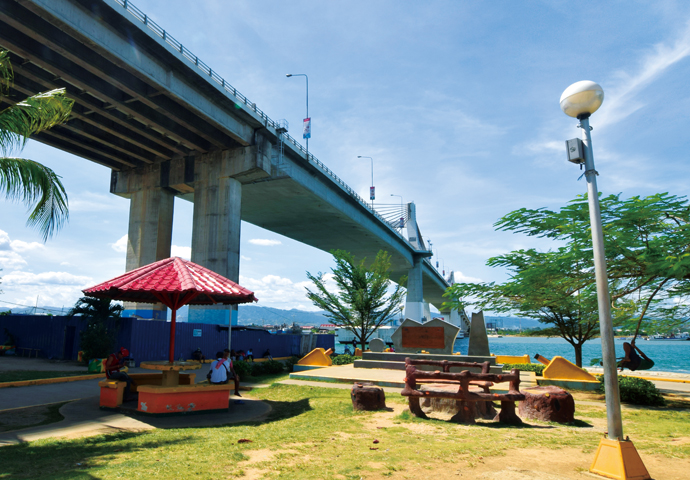
Connecting Japan & Cebu:
The Philippine Mandaue-Mactan New Bridge.
It’s only the beginning.
The Cebu-Cordova Bridge is another milestone in
Cebu's development which is planned to begin sometime in 2017.
The New Bridge (Marcelo Fernan Bridge) is 1,237 meters long and 2,200 meters long including the approach. The center span is 185 meters wide. It was opened in 1999 and has two lanes each way and a path for pedestrians. It's also the widest and longest bridge to be built with the "Extradosed Cable-Stayed Bridge" technology developed in Japan.
To the Next Metro Cebu
When you cross the Mactan Mandaue Bridge (The New Bridge), you'll be greeted with a plate that says "Welcome to Cebu!". The Marcelo Fernan bridge was built with assistance from the Japanese government and was led by the Kajima Corporation. It was completed just before the turn of the 21st century. In the latter half of the 20th century, the Old Bridge was responsible for the economic growth of Metro Cebu. But many people welcomed the New Bridge, which was built to handle the increasing volume of traffic.
It has been over 18 years since the New Bridge was completed. Presently, tens of thousands of people cross from Cebu to the Mactan Export Processing Zone (MEPZ) every day. The number of Japanese owned companies and families are significantly high in the area.
Moreover, the presence of the New Bridge will be strengthened, because a new International Container Terminal will be completed in 2020, off Consolacion. Products made on Mactan Island will cross the bridge and be sent off to the world from the new International Container Terminal. Metro Cebu has lots of skilled and diligent Cebuanos - as long as they remain to be excellent workers, they will certainly attract many factory owners domestically and overseas.
However, this New Bridge is only the beginning. We have only seen the start of Metro Cebu's development.
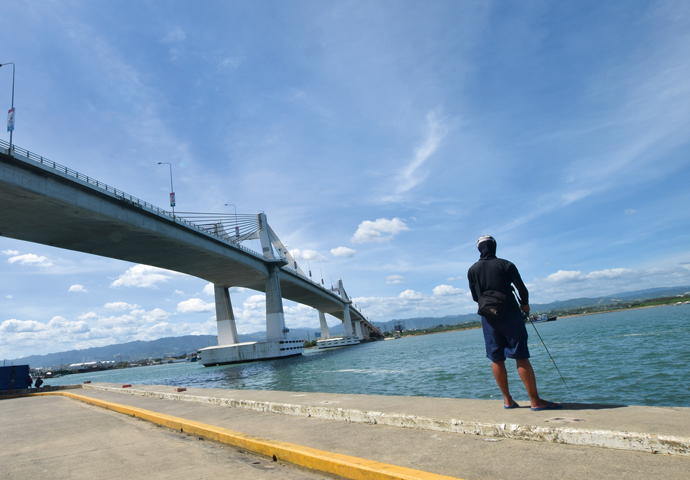
A young man enjoys fishing at the New Bridge wharf, under the scorching sun.

The peaceful Millennium Park on the Mactan side.
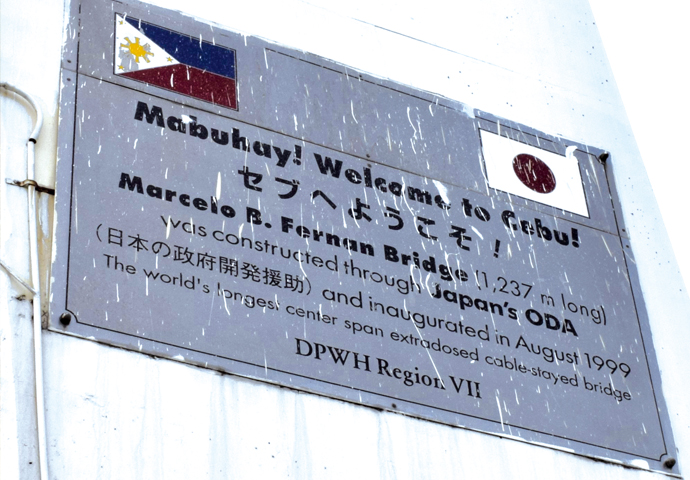
Cebu's welcoming plaque, crossing from Mactan Island.
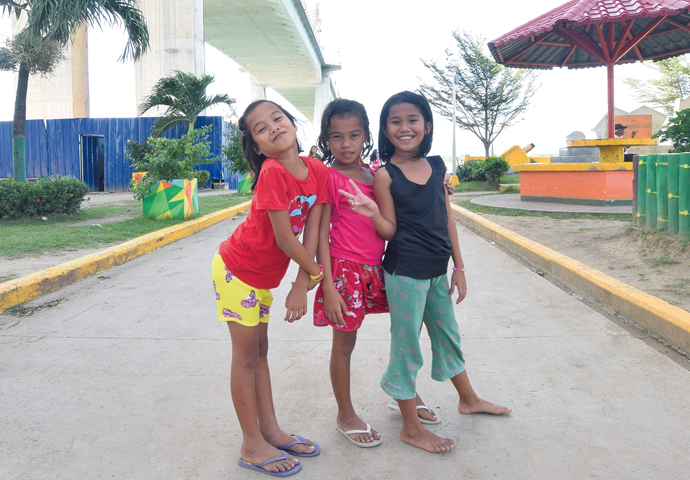
Charming children playing at Millennium Park.
Metro Cebu has just begun evolving into an international city!
Since the latter half of the 20th century, the Old Bridge has been supporting the economy of Metro Cebu. Bangka boats and ferries were the modes of transportation until the bridge was constructed. When it was built, things changed dramatically. In the 1980's, the tollgates were removed and as a result, the traffic volume substantially increased. In the 1990's, as ship collisions and natural disasters, like typhoons, overlapped, the vehicle limit was reduced to under 5 tons. Even so, vehicles exceeding 10 tons came and reached the durable limits of the bridge.
After, the New Bridge, the South Coastal Road, and tunnel were constructed to help alleviate the traffic congestion, with the help of Japan's ODA (Official Development Assistance). The South Coastal Road is Metro Cebu's main artery, continuing from Mactan Cebu International Airport to Talisay City. However, even though the traffic continues to increase in the 21st century, it's getting close to the limit. They predict the Metro Cebu will double in population by 2050, so improving the transportation infrastructure is urgent.
A 3rd bridge is about to be built in the area by a Hong Kong company. Together with the construction of the new International Container Terminal by a South Korean company, completion is set to be done in 2020.
This isn't the only thing planned. The current Cebu International Port, in a North Reclamation area near SM City Cebu, will be relocated to the new International Container Terminal, off Consolacion. Additionally, there are also plans for a new ferry terminal and a skywalk at the site for Cebu International Port. Although these plans are still just possibilities, other large commercial facilities and a waterfront may develop here in the future.
Currently in the development area near SM Seaside Mall and South Road Properties, there are already waterfront, marina, and town developments, including hotels and restaurants, about to begin. This is a joint-development between Cebu City and a major development company in the Philippines. However, there's nothing to see right now but, in the next 5-10 years, the SRP will dramatically change its appearance and attract many people.
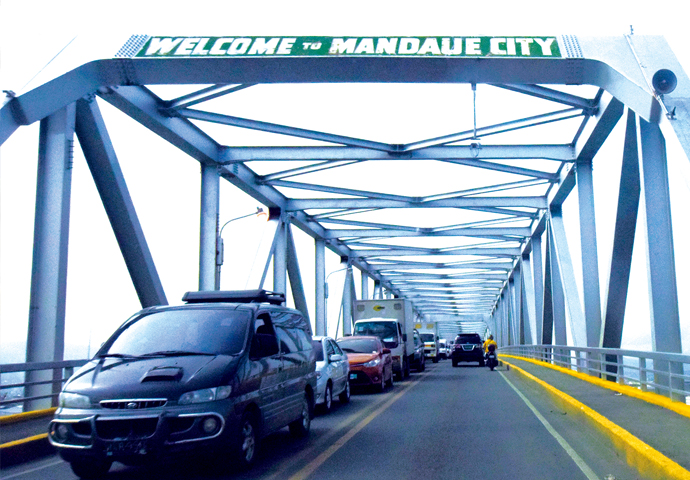
The Old Bridge
The Old Mactan–Mandaue Bridge, also known as the Osmeña Bridge, was opened in 1972. The bridge is 846 meters long. Everything from the design of the bridge to its construction was done by Filipino engineers. The tollgates were demolished in the late 1980’s and there are no more traces of the gates now. Today, different vehicles, like motorcycles, taxis, and tricycles, come and go and the traffic continues to increase day by day.
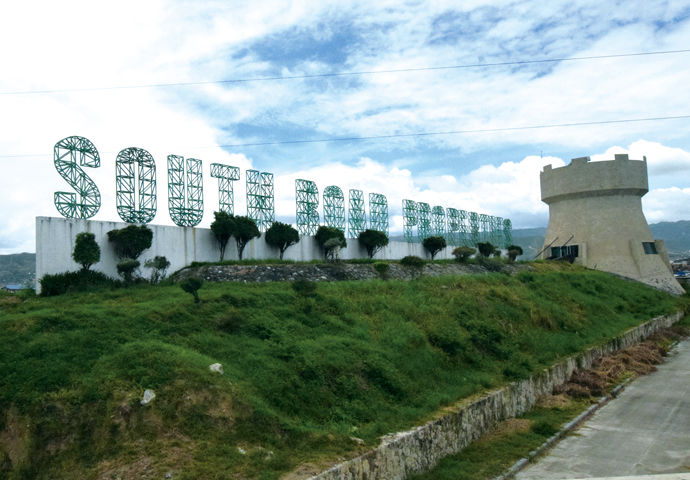

The South Coastal Road and tunnel were constructed by Japan's ODA, Kajima Corporation, and Philippine companies. The degree to completion is similar to those in the urban areas of Japan. The tunnel was finished in 2010 at a total length of 610 meters.
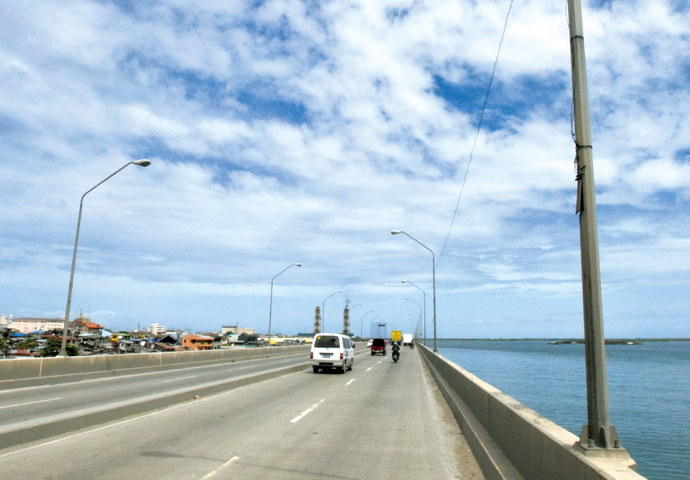
The South Coastal Road. Including the major influence of Japanese companies, South Road Properties is highly recognized by many people in Cebu as the main road area. The degree of completion is parallel to Japan's national highways and expressways. A number of vehicles break loose from traffic jams and speed up. They expect the 3rd bridge to be finished in 2020 and that will increase traffic. It'll be easier to access neighboring towns like Oslob (famous of whale sharks) from Mactan Island.
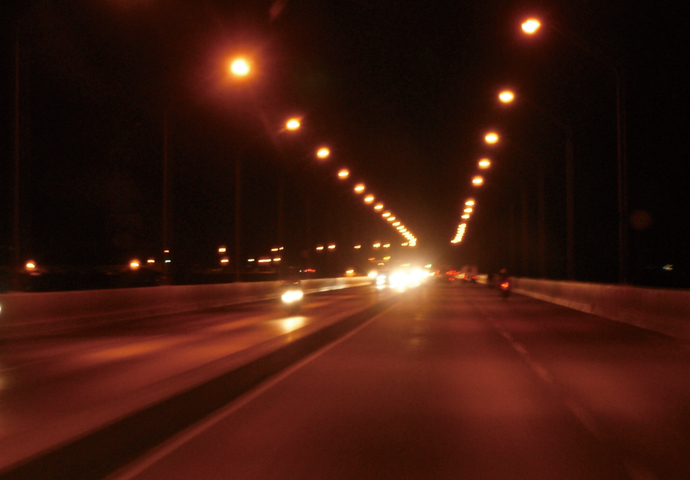
The South Coastal Road during sunset. The illuminated road's color is akin to Japan's expressways. If they weren't driving on the right, it might be mistaken for a road in Japan. The volume of traffic stays the same throughout the day.
The Charming New Metro Cebu
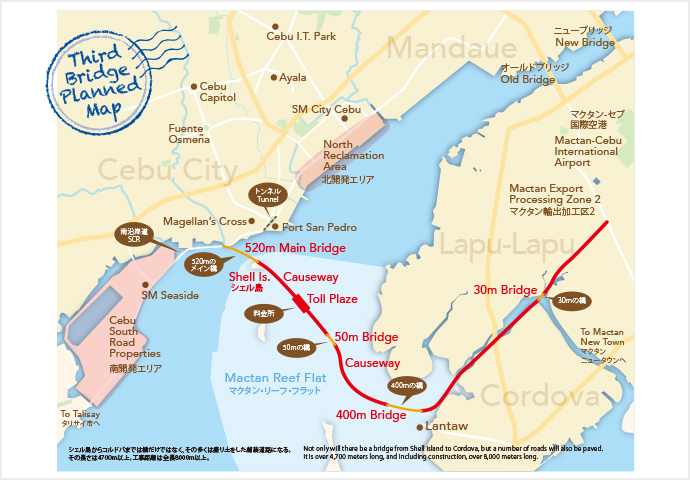
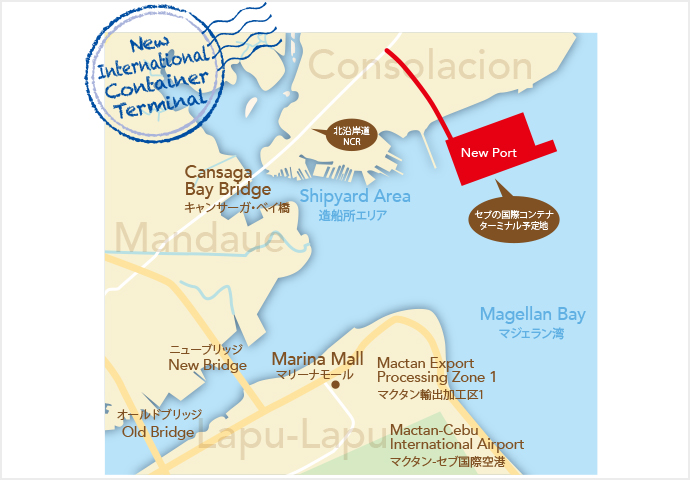
I t'll be after 2030 when all these developments are completed. The old town between the South Road Properties area and the North Reclamation area of Cebu City will become a huge, commercialized tourist area.
The new International Container Terminal will become even bigger and become a major Cebu industrial force, and thus a world international port.
The beach resorts on the east coast of Mactan Island will be further developed. Metro Cebu has great growth potential in each of the commercial, industrial, and tourism industries. From Cebu to the world, from the world to Cebu. It's possible Cebu will be an international port city like Singapore, Hong Kong, Macao, and Shanghai.
On the other hand, inner city traffic infrastructure and environmental problems are critical. As of 2013, Yokohama City is taking steps to build an environment-friendly city. Japan has suffered from pollution and environmental devastation, but it has recovered. It's a good gesture to share this knowledge for Cebu's benefit.
Not only Japan, but various other countries and companies are paying attention to Metro Cebu's advancement. This is the start of a full-fledged leap into the future for Cebu.
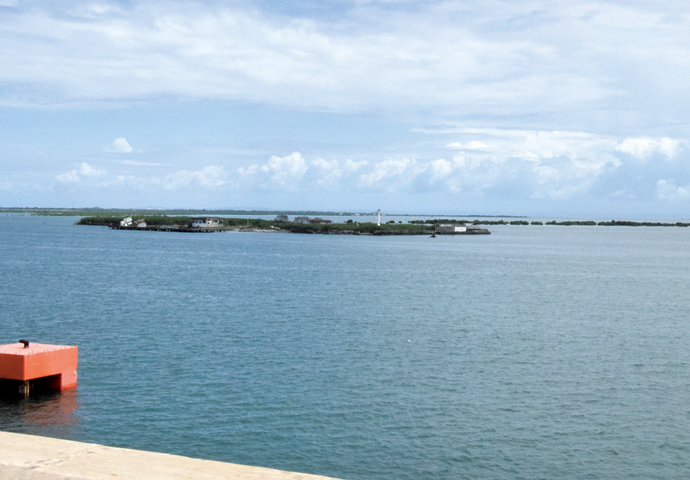
Shell Island
The 3rd bridge will go from SRP to Shell Island. Construction has already begun, however, it won't be finished for several more years.

SM Seaside Mall
The largest mall in Cebu is located close to where the 3rd bridge will be. There are also considerations for high-rise apartments in the area.

Fort San Pedro
A famous historical site in Cebu City. The tunnel under the site was built by a Japanese company to preserve the beauty of the spot.







